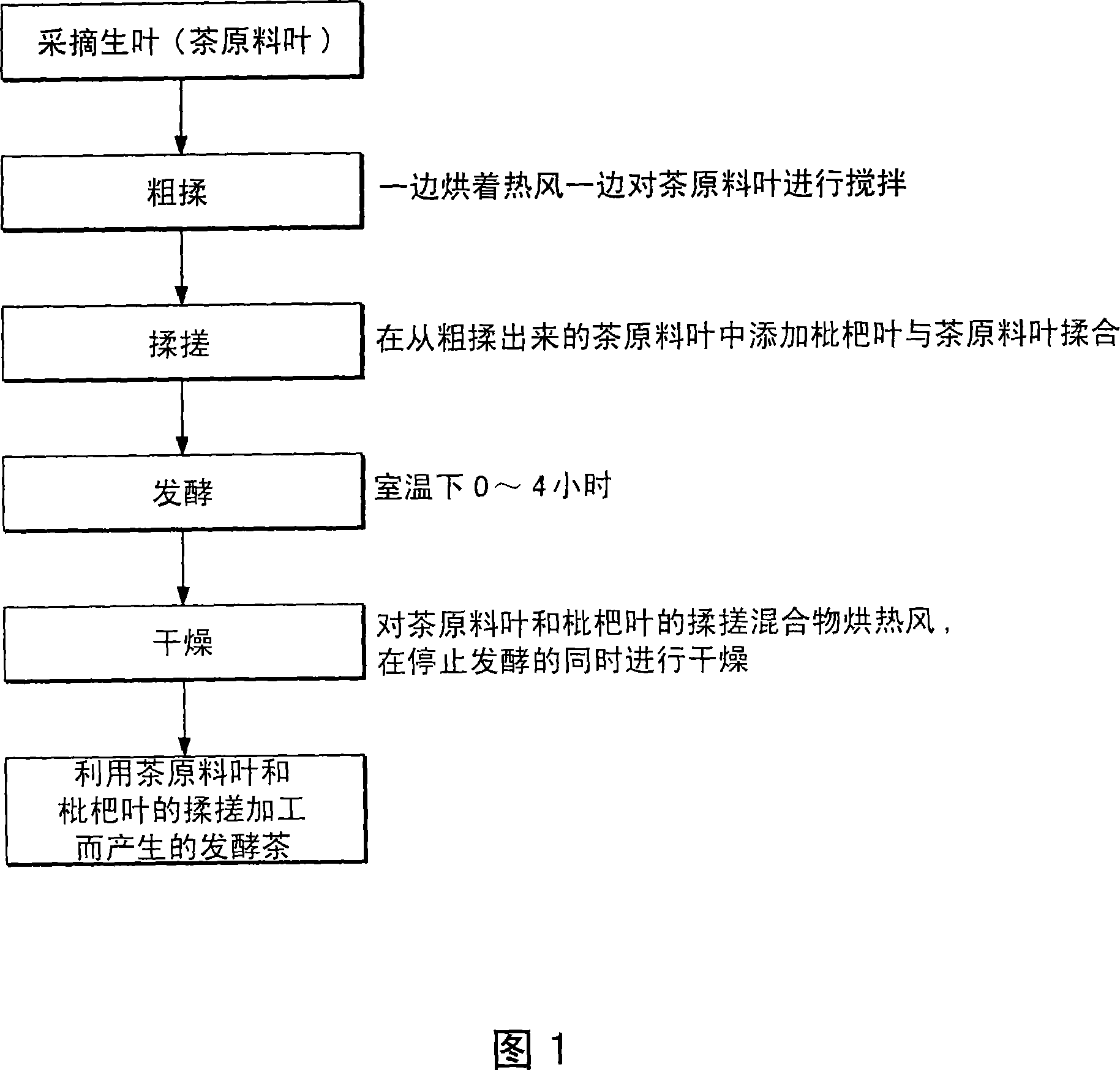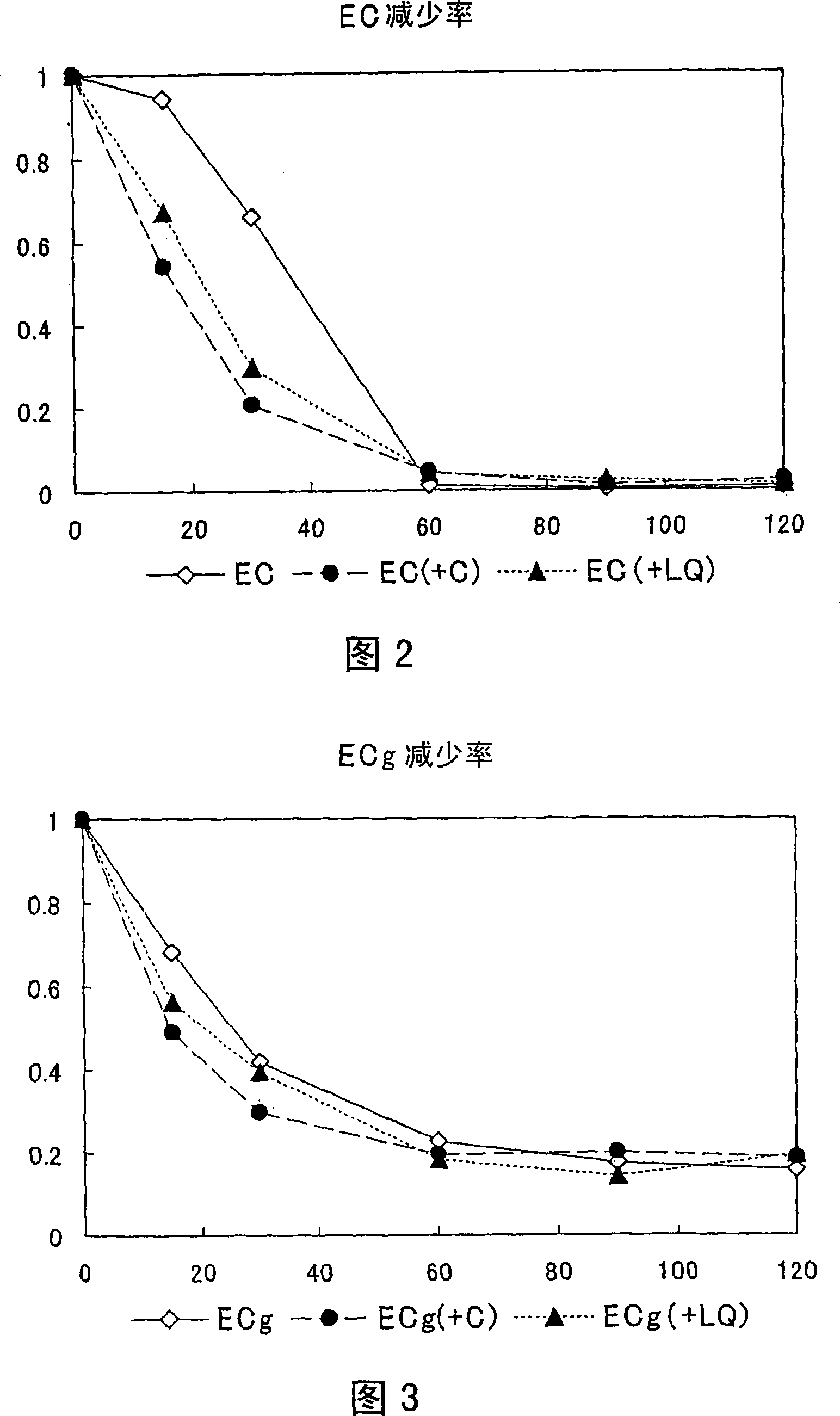Fermented tea obtained by tea-rolling processing of tea material leaves and loquat leaves, and composition having extract contained in fermented tea as active component
A technology of loquat leaves and fermented tea, which is applied in the direction of drug combination, tea treatment before extraction, anti-toxic agent, etc., can solve the problems of high cost, poor quality, and inability to improve health, and achieve the effect of low price, light aftertaste, and high aroma
- Summary
- Abstract
- Description
- Claims
- Application Information
AI Technical Summary
Problems solved by technology
Method used
Image
Examples
Embodiment 1
[0040] In this example, two levels of loquat leaves of 10% and 25% by weight were added to the tea raw material leaves of Sanbancha, kneaded by a kneading machine for 20 minutes and 40 minutes, and the fermentation was carried out at 0, 1, 2, In 6 levels of 4, 6, and 24 hours, a total of 24 samples of fermented tea obtained by rubbing and processing tea raw material leaves and loquat leaves were carried out.
[0041] The aroma and taste of 24 samples of fermented tea obtained by rubbing raw tea leaves and loquat leaves were conducted by 3 persons with experience in sensory examination of green tea. The results are shown in Table 1. That is to say, for the taste and fragrance, if the kneading time is 20 minutes and the fermentation time is 0-4 hours, the aroma is high, the aftertaste is light, and the quality is high. However, if the kneading time is 40 minutes and the additional fermentation time is more than 6 hours, the aroma decreases, the bitterness and astringency increa...
Embodiment 2
[0059] In this Example 2, at the test tube level, loquat leaves were added to tea raw material leaves and fermented to compare production of catechins, theaflavins, and thea bigallocatechins.
[0060] The following three tea sample fermentation experiments A, B, and C were carried out, and the reduction of catechins and the production of theaflavins were compared.
[0061] A: Take 50g of fresh tea leaves and 250mL of water and grind them together with a Waring blender, put them into a poly beaker (1L), and make the shaft equipped with a 5cm propeller-type stirring blade in the blender It was rotated at a high speed and stirred for 2 hours while mixing air. After 0 minutes, 15 minutes, 30 minutes, 60 minutes, and 120 minutes after the start of stirring, 5.0 mL was taken out from the reaction solution, poured into an Erlenmeyer flask (50 mL) with water (about 20 mL), and then heated with a microwave for about 20 seconds. After cooling, ethanol was added to 50 mL, filtered with ...
Embodiment 3
[0070] In this example 3, green tea and black tea made from raw tea leaves, loquat tea obtained by drying and roasting loquat leaves, fermented tea obtained by rubbing tea raw leaves and loquat leaves (fermented tea obtained by rubbing and processing tea) The aroma components of tea) were compared, and the unique aroma components of fermented tea obtained by rubbing tea raw leaves and loquat leaves were studied. Generally, the pretreatment of tea aroma components is carried out by chromatographic column concentration. Here, the maximum number of aroma components that can be detected is very small, but as a simple and rapid sample extraction, concentration, and chromatographic introduction method, solid-phase microextraction is still used.
[0071] The sample was prepared by adding 2.5 g each of green tea, black tea, loquat tea, and kneading fermented tea to a 50 mL Beyer bottle, 0.1 mL of a 30% sodium chloride aqueous solution, and 20 mL of distilled water at 80°C. After seal...
PUM
 Login to View More
Login to View More Abstract
Description
Claims
Application Information
 Login to View More
Login to View More - R&D
- Intellectual Property
- Life Sciences
- Materials
- Tech Scout
- Unparalleled Data Quality
- Higher Quality Content
- 60% Fewer Hallucinations
Browse by: Latest US Patents, China's latest patents, Technical Efficacy Thesaurus, Application Domain, Technology Topic, Popular Technical Reports.
© 2025 PatSnap. All rights reserved.Legal|Privacy policy|Modern Slavery Act Transparency Statement|Sitemap|About US| Contact US: help@patsnap.com



